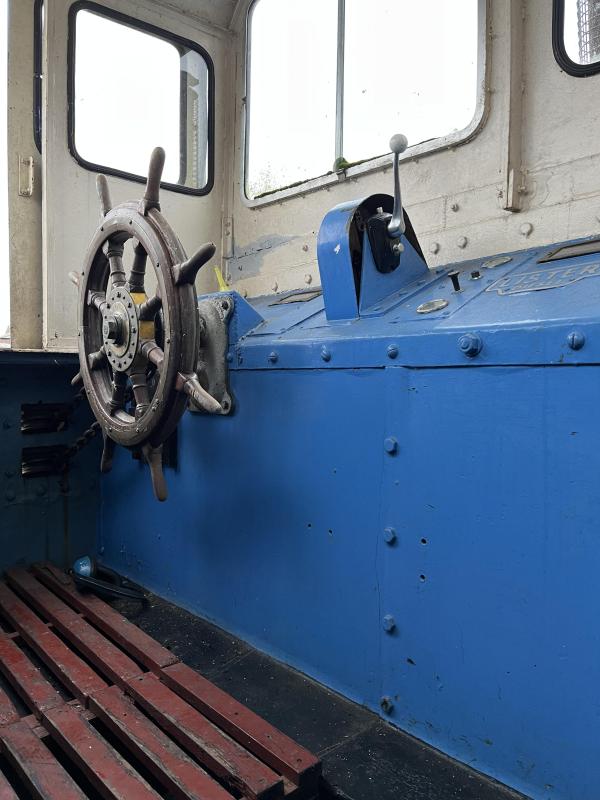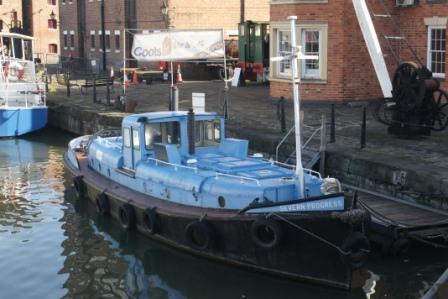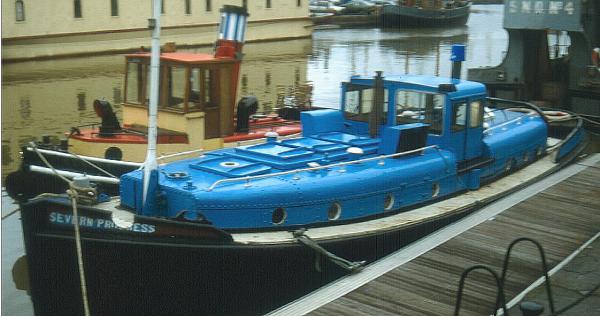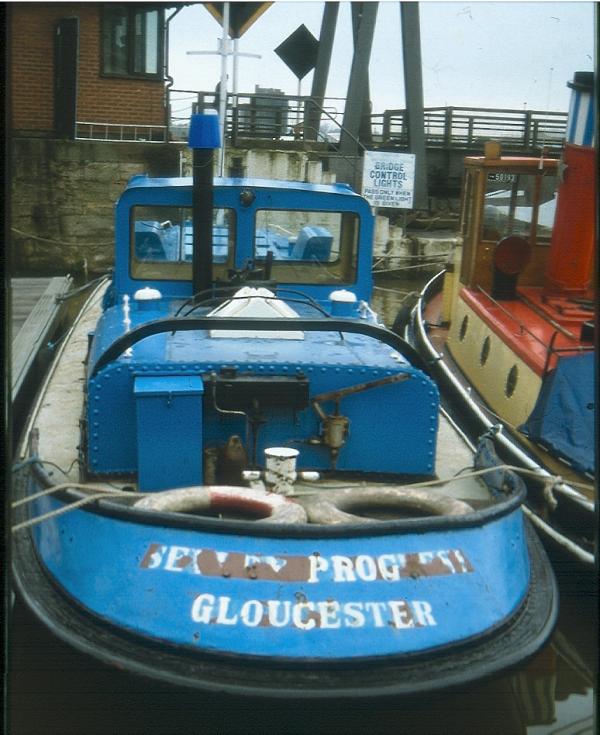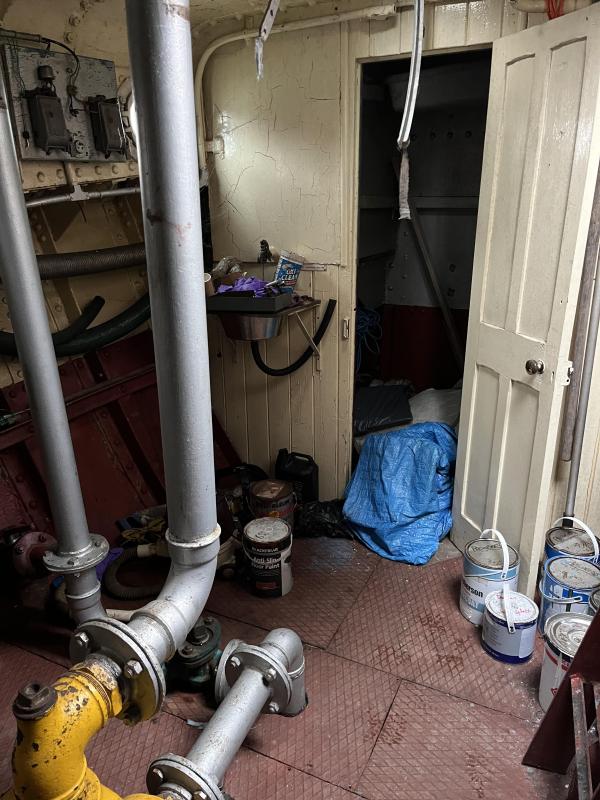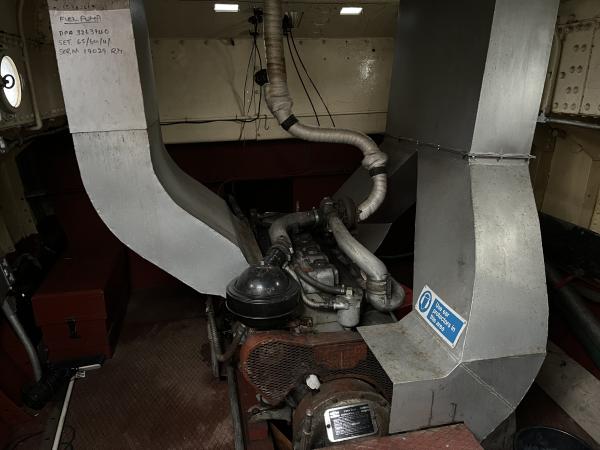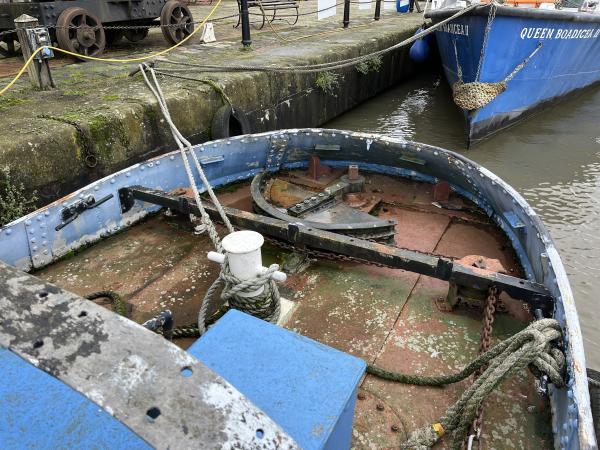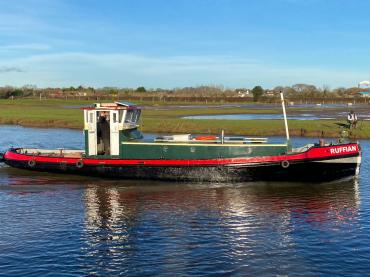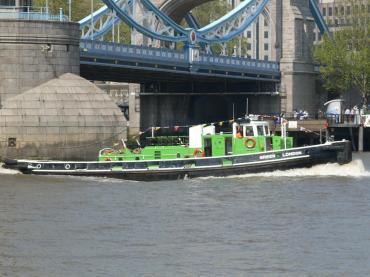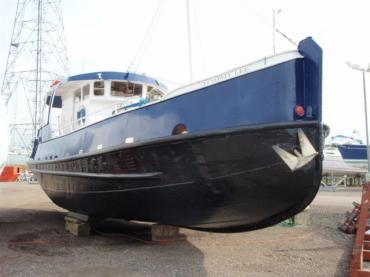
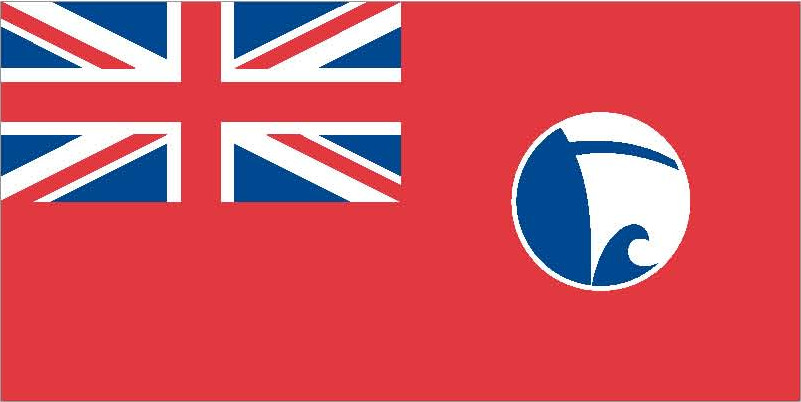
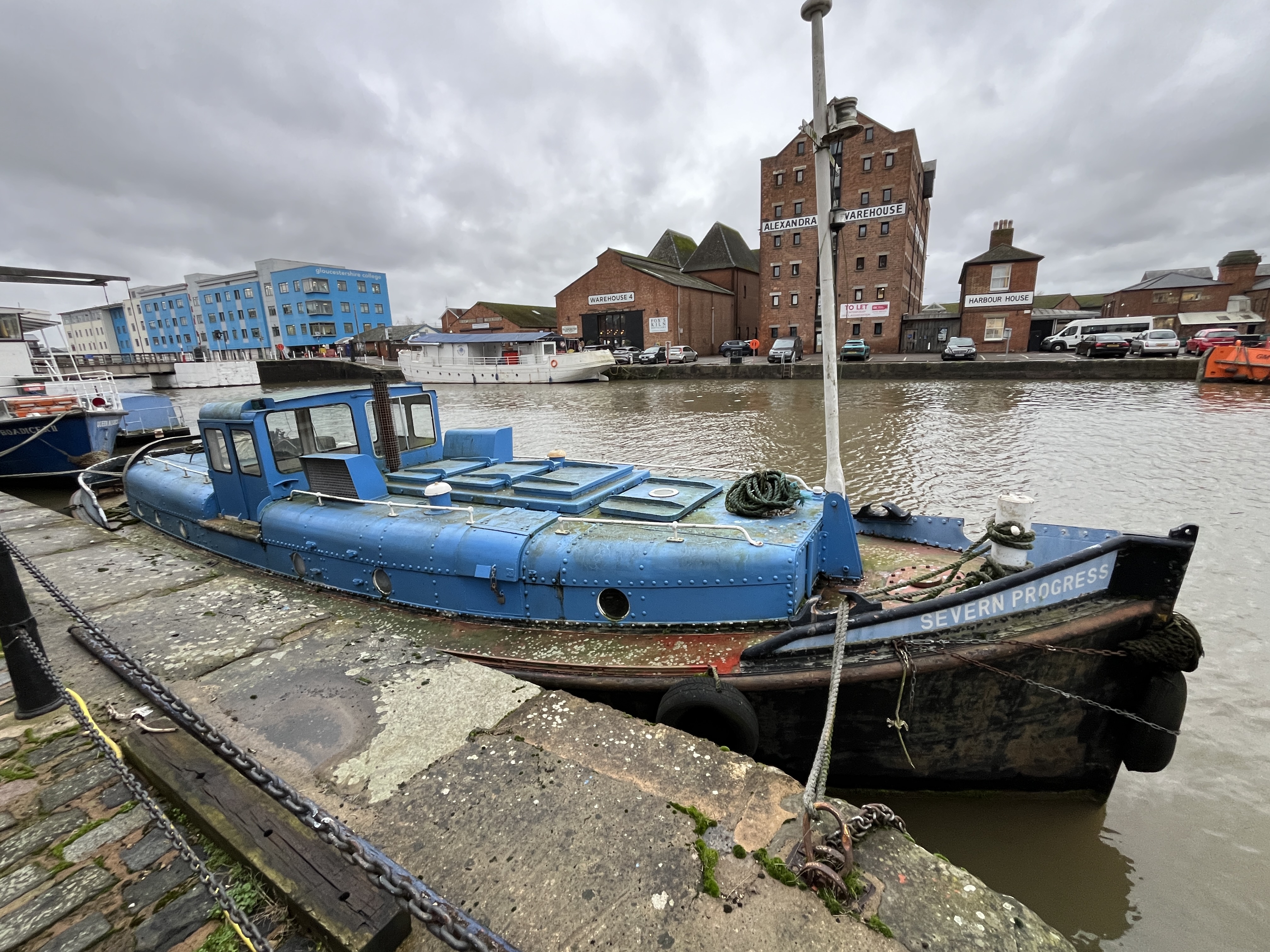
Previous names
- 1931 - 1933 Progress
Details
Construction
Dimensions
History
SEVERN PROGRESS was built for the Severn & Canal Carrying Company (based at Gloucester) towing fleet in 1931 by Charles Hill & Sons Ltd, Bristol. Originally just called PROGRESS, the SEVERN prefix was added to the fleet names in 1933. She was completed with a 100-bhp Kromhout semi-disesel engine, which was later replaced by a Lister diesel. Steering was from an open well and later a wheelhouse was added. She was designed to tow six narrowboats or two barges on the Severn between Gloucester and Worcester, sometimes extending to Stourport, and alternating these tows with SEVERN ENTERPRISE. SEVERN PROGRESS was based at the Ship Inn and tows were normally picked up after they had passed through the Gloucester lock. Narrow boats bound for the Midlands would be left at Worcester to pass into the canal. After nationalisation of the canals in 1948, the tug became part of the British Waterways fleet and continued towing on the Severn until commercial traffic died out in the late 1960s. She moved to the Kennet & Avon Canal to assist with maintenance work between Hanham Lock and Bath. In 1991, she was acquired by the British Waterways Museum. Source: Paul Brown, Historic Ships The Survivors (Amberley, 2010), updated Feb 2011.
We are currently seeking further information on this National Historic Fleet vessel. If you have any details about this vessel past or present, please contact us.
Significance
1. What is the vessel’s ability to demonstrate history in her physical fabric?
Evidence for designs, functions, techniques, processes, styles, customs and habits or uses and associations in relation to events and people. How early, intact or rare these features may impact on significance.
SEVERN PROGRESS is a steel, single-decked, single screw River Severn tug. Originally named PROGRESS, this tug was built in 1931 by Charles Hill & Sons of Bristol. The Severn and Canal Carrying Company commissioned the vessel. PROGRESS, with her sister ship ENTERPRISE, was designed to work on the river above Gloucester towing trains of dumb barges, fuel tanker barges and narrow boats to and from Worcester and Gloucester.
The original engine was a Kromhout semi-diesel which was replaced with a Lister diesel engine. The vessel’s superstructure was adapted and improved during its long working life. The wheelhouse was not part of the original construction, with the steering position in an open well space.
The vessel has undergone some adaptation over the years, to suit the type of work undertaken, with some features missing and others added. The vessel’s hull is significantly intact and the external condition is largely as constructed. It remains in good condition, with any changes under control of an ongoing Conservation Management Plan.
2. What are the vessel’s associational links for which there is no physical evidence?
Associations with people or places. Off-ship research.
SEVERN PROGRESS typically towed vessels from Gloucester to Worcester, or Stourport. This included loaded dumb barges with a number of differing cargoes including corn, timber and petroleum. The vessel was based at the Ship Inn and tows were normally picked up after they had passed through the Gloucester lock on the Gloucester and Sharpness Canal.
In 1934 PROGRESS was renamed SEVERN PROGRESS to match the other motor vessels entering service on the river. The tug became part of the British Waterways fleet after nationalisation of the canals in 1948, continuing to work on the River Severn until commercial traffic died out in the late 1960s. She then moved to assist with maintenance work between Hanham Lock and Bath on the Kennet & Avon Canal. After a working life of 60 years, in 1991, SEVERN PROGRESS became part of the collection of Canal and River Trust and is now displayed at the National Waterways Museum, Gloucester.
SEVERN PROGRESS is of great local significance to the Gloucester area, providing a historical link to the trade and commerce once found on the River Severn and the Gloucester and Sharpness Canal. She is a strong example of this type of working craft, local to the River Severn, with a long and well documented working life. She was recorded on the National Register of Historic Vessels in 1996 and is a member of the National Historic Fleet.
3. How does the vessel’s shape or form combine and contribute to her function?
Overall aesthetic impact of the vessel, her lines, material she was built from and her setting. Does she remain in her working environment?
SEVERN PROGRESS’ design as a single-decked, single screw, canal tug meant that she was very well-fitted for her original intended purpose. Modifications and adaptations made as a result of her later role assisting with maintenance work on the Kennet & Avon Canal also enabled her to cope with changing circumstances and operational conditions.
The vessel’s original 100-bhp Kromhout semi-diesel engine, later replaced by the Lister diesel, gave it substantial pulling power. Although designed for practicality rather than appearance, her pale blue superstructure and black hull nevertheless gives her a distinctive appearance.
SEVERN PROGRESS is currently located afloat at the Canal and River Trust Museum in Gloucester on the waterways where she once worked.
Source; Canal & River Trust, November 2024
Key dates
-
1931
Built by Charles Hill & Sons Ltd, Bristol, for the Severn & Canal Carrying Company and named Progress
-
1933
Renamed SEVERN PROGRESS
-
1948-60s
Became part of the British Waterways fleet and continued towing on the Severn
-
1960s
Moved to the Kennet & Avon Canal to assist with maintenance work between Hanham Lock and Bath
-
1991
Acquired by the British Waterways Museum
Sources
Mike Taylor, Waterways World (August, 1990, pp90-1) Alf Thomas & SEVERN ENTERPRISE
Own this vessel?
If you are the owner of this vessel and would like to provide more details or updated information, please contact info@nationalhistoricships.org.uk

